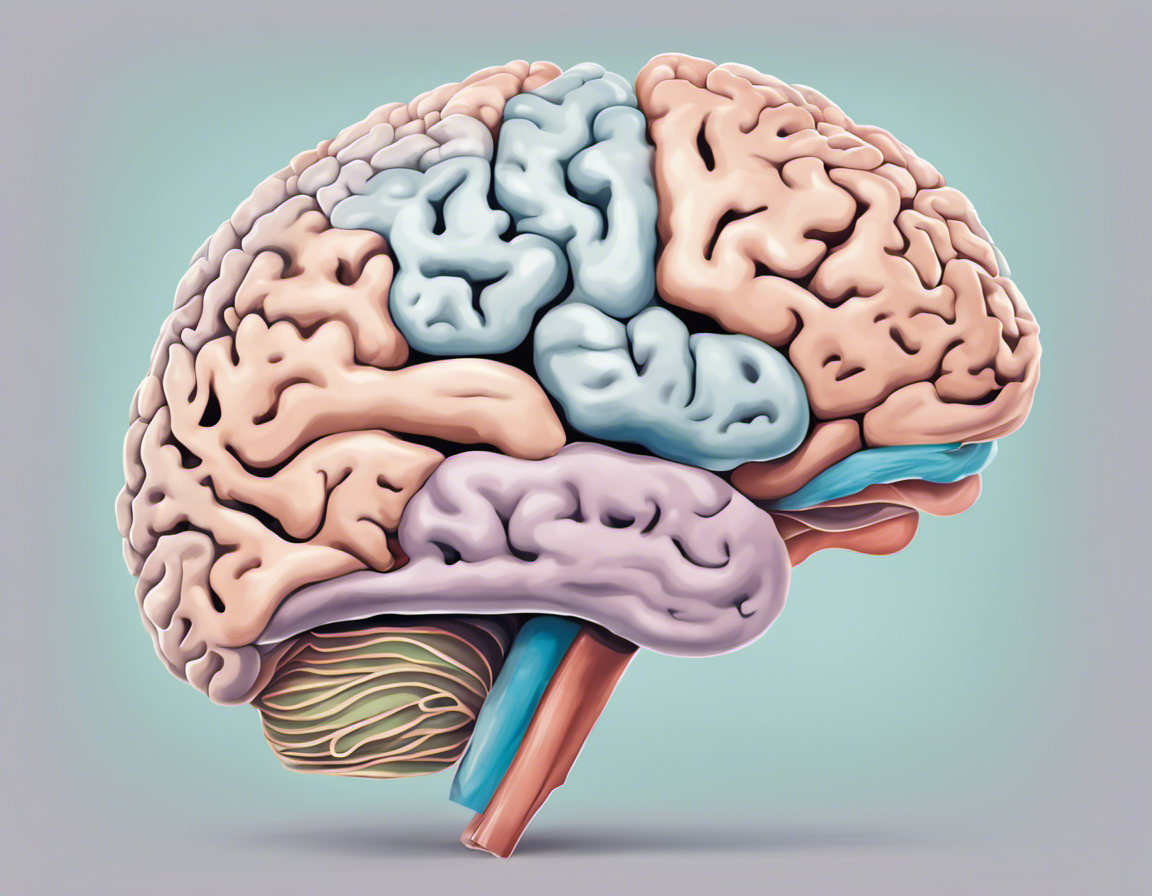Unraveling ADHD: A Global Perspective on Diagnosis and Treatment

Have you ever wondered why ADHD, a condition known as Attention Deficit Hyperactivity Disorder, can appear so diverse in its recognition and treatment across the globe?
Indeed, ADHD is a widely acknowledged neurodevelopmental disorder. However, perceptions of ADHD are significantly colored by cultural beliefs, socioeconomic factors, and the availability of medical treatments.
From the bustling streets of Tokyo to the tranquil open spaces of Scandinavia, variations in socioeconomic status, cultural beliefs, and prioritization of wellness approaches shape how ADHD is understood and managed.
ADHD: A Global Perspective
This article will peel back some of the layers of this intriguing subject. We’ll delve into the influence that culture has on recognizing and diagnosing ADHD globally, examine how socioeconomic environments shape our perception and prevalence rates of this condition, and explore variations in both approaches to treatment and global access. Drawing from numerous studies and expert insights, our understanding of global perspectives on ADHD will deepen.
The importance
The importance of understanding these differences cannot be overstressed – after all, creating a culturally sensitive approach to diagnosing and managing ADHD ensures that we provide the best-suited care for those affected by it. It’s an exploration that uncovers not just what we know about ADHD but how our knowledge is shaped by our perspective—the perspective that is painstakingly crafted by our cultures, societal structures, and economic standing. So, let’s embark on this journey towards unraveling ADHD from a global perspective.
Understanding Global Perspectives
When discussing mental health disorders such as ADHD, it’s vital to acknowledge that interpretations and treatments are often closely linked to cultural background and societal perspectives. Globally, attitudes towards ADHD and other mental health disorders can vary significantly, often resulting in different diagnostic criteria, treatment methods, and overall societal attitudes.
Cultural Variations in Recognizing and Diagnosing ADHD
How ADHD is recognized and ultimately diagnosed can differ drastically from one culture to another. For instance, some societies may regard behavioral symptoms associated with ADHD as simply representative of a spirited or highly energetic individual. As such, these societies might overlook or underdiagnose the disorder, attributing the symptoms merely to personality traits rather than a clinical condition.
In other cultures, there could be a much more clinical approach to ADHD, with clear medical protocols and an established framework for diagnosis. These cultures might have higher diagnosis rates because of their health systems’ structure and the broader acceptance of ADHD as a legitimate medical disorder. Essentially, cultural factors play an integral role in shaping the perception, recognition, and diagnosis of ADHD.
Influences of Cultural Factors on ADHD Perceptions and Prevalence Rates
Not only do perceptions of ADHD vary across cultures, but so too do prevalence rates. These differences in prevalence rates across cultures could be attributed to several factors – including societal norms about acceptable behavior, definitions of what constitutes a disorder, and varying approaches to mental health more generally.
Stigma often plays a vital role in cultural perceptions of ADHD. In societies where mental health issues are highly stigmatized or misunderstood, individuals showing symptoms consistent with ADHD may be less likely to seek help or receive a formal diagnosis due to fear of being ostracized or misunderstood.
Societal norms also play a role in the perceived prevalence rates of ADHD. In cultures where high-energy or hyperactive behavior is less tolerated or seen as abnormal, diagnoses for conditions like ADHD might be higher. Conversely, fewer diagnoses may occur in cultures where such behaviors are considered more typical or even valued.
In summary, cultural perspectives and societal norms significantly influence the recognition, diagnosis, and reported prevalence of ADHD across the globe. An understanding of these factors is critical for healthcare providers looking to provide effective care that is sensitive to their patient’s cultural backgrounds.
Influence of Socioeconomic Factors
When examining the diagnosis and recognition of ADHD, socioeconomic status (SES) emerges as a significant influence. It can shape the perception, understanding, and identification of ADHD among different communities.
Association between ADHD and Socioeconomic Status
The relationship between ADHD and socioeconomic status is complex. Some studies suggest children from lower socioeconomic backgrounds might be at a higher risk for developing symptoms associated with this disorder. Conversely, individuals from higher SES tiers may have better access to healthcare and resources, leading to more diagnoses.
Research indicates that low socioeconomic status could lead to a higher risk of ADHD due in part to environmental stressors, less access to quality healthcare, and the impact of poverty on cognitive development. Difficulties in acquiring an accurate diagnosis may also be heightened due to disparities in healthcare access, contributing to underdiagnosis in these groups.
Impact of Education and Income Levels on ADHD Diagnosis
Educational backgrounds may also impact how symptoms of ADHD are perceived, identified, and eventually diagnosed. In societies with higher education levels, ADHD-related behaviors might be more readily recognized as indicative of potential clinical significance rather than dismissed as personal shortcomings or problematic behavior.
Similarly, income level plays an important role. Higher-income families often have better access to health services, including mental health resources. This means they can seek professional help sooner when they notice their child exhibits symptoms associated with ADHD.
ADHD Treatment Across the Globe
Treatment modalities for ADHD vary both by country and cultural norms of the communities within those countries. These differences arise from varying beliefs about mental health disorders and perceptions of therapy and medication.
Variances in ADHD Treatment Approaches
Globally, treatment approaches for ADHD vary widely due to diverse medical traditions and cultural attitudes toward the condition. For instance, a combination of medication (often stimulants) and behavioral therapies is typically recommended in many Western countries. In contrast, countries adhering to traditional Eastern medicine might heavily emphasize lifestyle modification and natural remedies.
Global Availability and Accessibility to ADHD Treatment
Despite the global prevalence of ADHD, the availability and accessibility of treatment differ drastically across regions. Countries with well-funded public healthcare systems may ensure better access to diagnostic services and treatment for all income levels. However, in many developing countries, ADHD treatment largely remains inaccessible due to the lack of resources, the stigma surrounding mental health conditions, and limited awareness about this disorder.
To enhance global ADHD management and care, healthcare communities must strive to be culturally sensitive. By understanding different cultural attitudes towards ADHD, professionals can adapt their approach to diagnosing and treating this disorder, which can mitigate the impacts of culture-driven misunderstandings or biases.
Future Directions for ADHD Research Across Cultures
Going forward, research should focus on identifying consistent diagnostic criteria considering cultural contexts. Understanding the nuances of socioeconomic and cultural influences on ADHD can pave the way for more effective global initiatives, policies, and programs to manage this condition.
Conclusion
In conclusion, it is evident that cultural norms and socioeconomic factors greatly influence the recognition, diagnosis, and treatment of Attention Deficit Hyperactivity Disorder (ADHD) across varying demographics worldwide.
Our understanding of ADHD cannot be separated from these influencing facets, as they directly impact how symptoms are perceived, diagnosed, and managed within different societies. Thus, it’s imperative for healthcare professionals to foster cultural sensitivity in their approach toward ADHD.
Additionally, considering the strong influence of socioeconomic factors on this disorder, it becomes essential to focus on providing equal access to resources and awareness, especially in lower-income regions.
We are left with a critical task: devise consistent and globally applicable diagnostic criteria incorporating cultural contexts. Further research and exploration are needed to fully appreciate all these complexities surrounding ADHD worldwide. Let us strive for adjustability in our medical approaches, making our healthcare systems more welcoming and respective of cultural nuances.
The journey towards a universal understanding of ADHD is dipped in diversity – let’s embrace it and drive forward inclusively towards better mental health care for all.




Comments